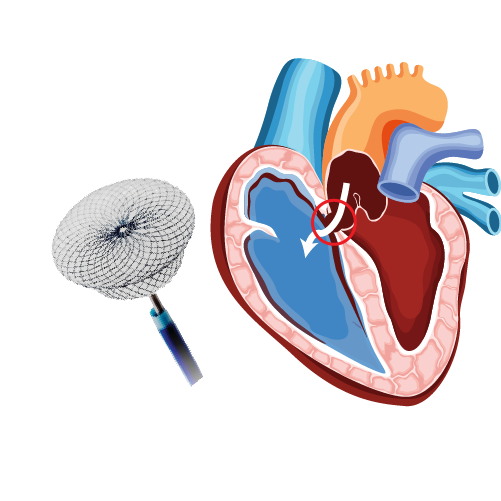Chronic Limb Ischemia : Symptoms, Diagnosis, Treatment
What is Chronic Limb Ischemia?
- Arteries are blood vessels that carry oxygen-rich blood and essential nutrients from the heart to other parts of the body.
- When these arteries are narrowed due to cholesterol accumulation leading to the reduced blood supply to the affected organ.
- The process of cholesterol accumulation is called atherosclerosis.
- Ischemia is a reduction of blood supply to a particular organ potentially endangering its survival.
- Contrary to acute limb ischemia where a blood supply obstruction is a sudden event happening over to hours to days, Chronic limb ischemia is gradual over months to years,
- Chronic limb ischemia is due to cholesterol plaque accumulation in blood vessels with consequent blood clot formation.
- Chronic limb ischemia is also called peripheral arterial disease.
- The most severe form of peripheral arterial disease is critical limb ischemia, where a reduction in blood supply is so severe as to risk limb survival.
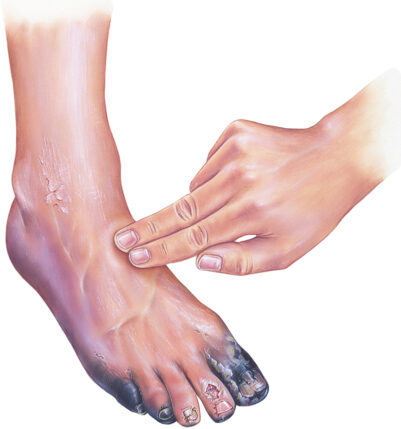
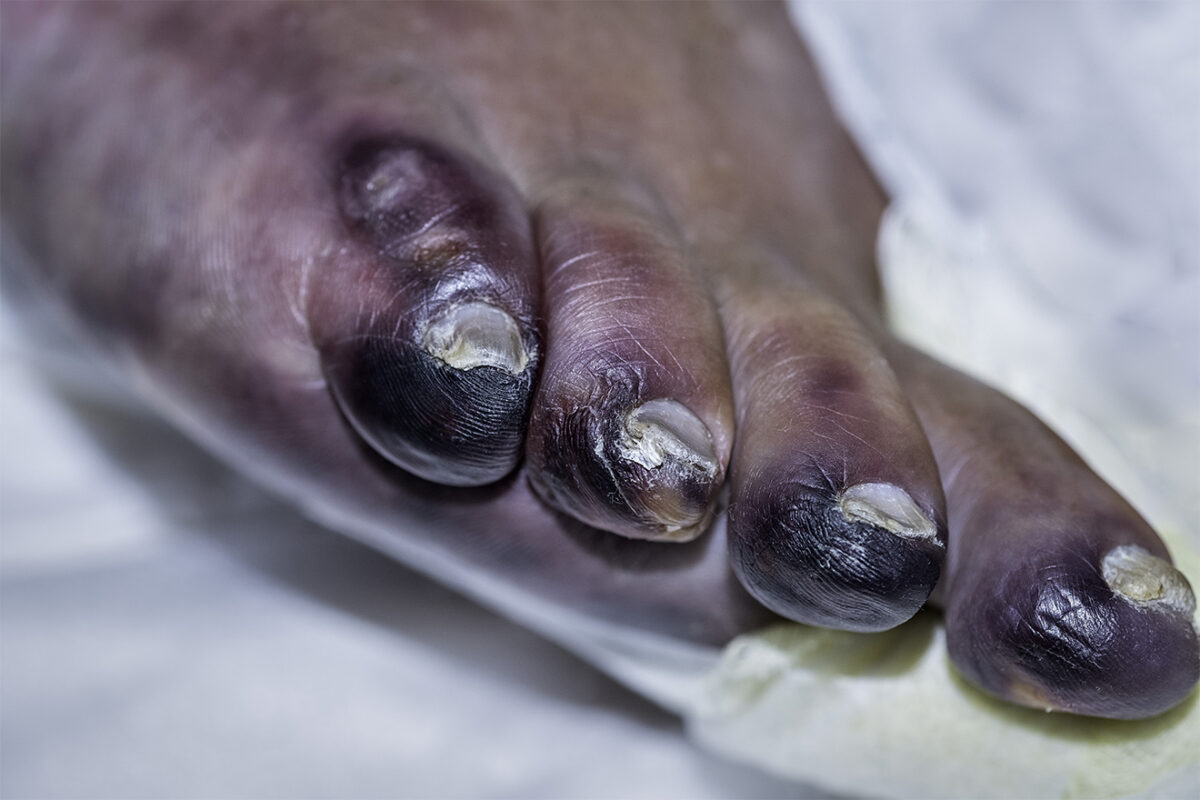
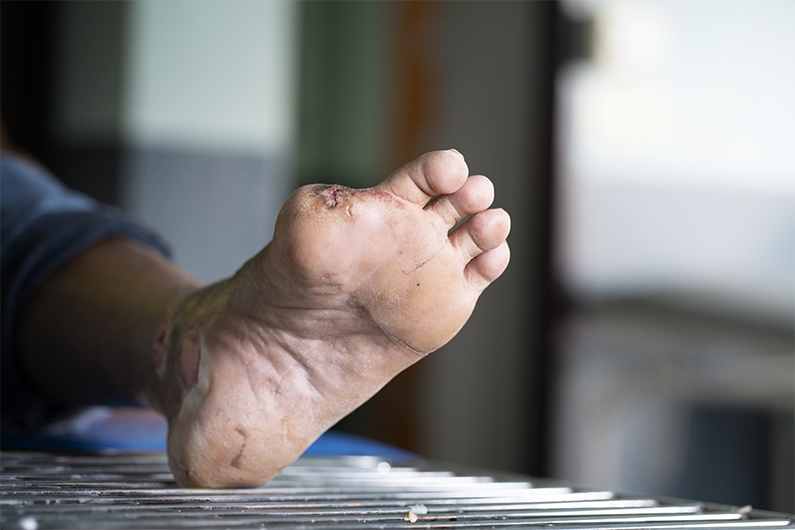
How does peripheral arterial disease present?
- Mild disease: Narrowing of the blood vessels consequent to cholesterol accumulation is an age-dependent process. After a certain age (usually beyond 60 years) there is a usual phenomenon and most of then do not any symptoms. This is because the reduction in blood supply is marginal or nor there.
- Severe disease: Usually present with symptoms once the narrowing has become critical. Pain in the calf muscles on walking and relieved at rest is a classical presentation and called intermittent Claudication. This leads to a limitation of physical activity further accelerating the cholesterol accumulation. Untreated, it progresses to critical reduction to the blood supply to limb manifesting as rest pain or gangrene (Blackish discolouration) of the toes. The latter manifestations of the peripheral arterial disease are critical limb ischemia.
Who are at risk of developing critical limb ischemia?
- Elderly age
- Smoking
- Diabetes
- Chronic kidney disease
- High cholesterol
- High blood pressure
- Family history of vascular disease
What are the symptoms of critical Limb ischemia?
- Severe pain or numbness in the legs and feet on walking and relieved with rest.
- Noticeable decrease in the temperature
- Loss of hair in legs
- Toe or foot sores
- Infections
- Non- healing ulcers
- Gangrene
- Shiny, smooth, dry skin in the legs or feet
- Thickening of the toenails
- Absent or diminished pulse in the legs or feet
What are the complications of Critical limb ischemia?
- Loss of limb
- Infection
- Stroke
- Death
How can we diagnose critical limb ischemia?
- Clinical examination
- Ankle-brachial index
- Ultrasound Doppler examination
- CT angiogram
- MR angiogram
What are the treatment options for Critical Limb Ischemia?
- Critical limb ischemia is a serious condition that needs immediate treatment to re-establish blood flow to the affected area.
- Most of these patients have blocks in blood vessels supplying the legs at multiple levels.
- The leg is at risk of getting lost if not treated promptly with a proper plan.
- Treatment for CLI can be quite complex and individualized, but the overall goal should always be to reduce the pain and improve blood flow to save the leg.
- The number one priority is to preserve the limb.
Treatments for CLI include the following:
- Medicines: Thrombolytic agents (blood dissolving medicines), Anti-diabetic drugs (To control blood sugar levels), Anti-hypertensive drugs (To control high blood pressure) & NSAID’s (To reduce the pain).
- Surgery: a) Bypass surgery
- b) Angioplasty & stent
What are the various surgical approaches for treating chronic limb ischemia?
| Bypass surgery | Angioplasty & Stent |
|---|---|
|
|
Advantages:
|
Advantages:
|
Limitations:
|
Limitations:
|
What is post-surgical rehabilitation for chronic limb ischemia patient?
- Treatment of chronic limb ischemia needs a multi-disciplinary approach
- After restoring the blood supply it is important to remove dead tissue as soon as possible
- Off-loading is a critical component to hasten to heal.
- Rehabilitation involving podiatrist and physiotherapist to create a custom-fitted prosthesis is essential to gain functionally normal status
- Aggressive control of diabetes, hypertension, cholesterol is essential
- Proactive investigations to look for blood vessel narrowing in the opposite leg as well as other organs heart, brain, kidneys etc…
What is the magnitude of chronic limb ischemia?
- Every 20 seconds one limb is lost in the world due to chronic limb ischemia.
- Common causes for limb loss – Diabetes, old age, renal failure, limb ischemia
- Cost of diabetic foot ulcer treatment is greater than the five most costly cancers
- Up to 25% of diabetics develop a foot ulcer.
- More than 50% of foot ulcers get infected and requiring hospitalization and 20% of the infected loose limb.
- After a major amputation,50% will have the other limb amputated in 2 years
- 5-year mortality after limb amputation is 68% which is more than many cancers
- Amputation of a part of toe without structured care plan can lead to further amputation in up to 60%. This is the most common problem observed because there is not enough understanding of the importance of blood supply restoration.
- The usual time needed for a diabetic foot wound is 150-300 days depending on the location
- Vascular screening in patients with claudication, paraesthesias, difficulty in walking by Color Doppler is a sensitive test.
- Unexplained or persisting leg symptoms in target groups – You need to refer them to a dedicated center.
What is the uniqueness of treatment for chronic limb ischemia by Dr. Raghu?
Chronic limb ischemia is managed by using the revascularization technique by Dr. Raghu’s cath lab. Availability of a multi-disciplinary approach involving podiatrist, Othepaeidician, physiotherapist, general surgeon, dietician and interventional cardiologist allows us to deliver unparallel results and success by preventing major amputation in more than 90% of cases. Comprehensive wound workup and analysis is done to promote wound healing and minimize or avoid amputation hastened by up to 90%. Trained to treat vascular disease in below knee and plantar-pedal loop too, hence wound healing rates are superior at our center.
Our Specialities
- Conditions
- Acute limb ischemia
- Chronic limb ischemia
- Aortic stenosis
- Mitral valve stenosis
- Mitral valve regurgitation
- Atrial fibrillation
- Tachycardia
- Bradycardia
- Palpitations
- High blood pressure
- Atrial septal defect
- Ventricular septal defect
- Patent ductus arteriosus
- Cardiac amyloidosis
- Hypertrophic cardiomyopathy
- Varicose veins
- Deep vein thrombosis (DVT)
- Myocarditis
- Endocarditis
- Pericarditis
- Peripheral arterial disease
- Pulmonary artery hypertension
- Pulmonary embolism
- Cath lab procedures:
- Coronary Angiogram
- Primary Angioplasty
- Coronary Angioplasty
- CHIP Angioplasty
- Aortic valve replacement surgery
- Mitral valve replacement surgery
- Device closure for Atrial septal defect
- Device closure for Ventricular septal defect
- Device closure for Patent Ductus Arteriosus
- Transcatheter aortic valve replacement (TAVR)
- Inferior vena cava (IVC) filter
- LA appendage closure
- Fistuloplasty
- Balloon mitral valvotomy
- 24 hours emergency services
- Clinics- weekly basis/monthly basis/ Yearly basis
- Prevention of cardiovascular diseases
- Diagnosis
BOOK AN APPOINTMENT

Dr. RAGHU | Chronic Limb Ischemia Treatment in Hyderabad
Cardiology Coronary, Vascular and
Structural Interventions
Conditions & Diseases
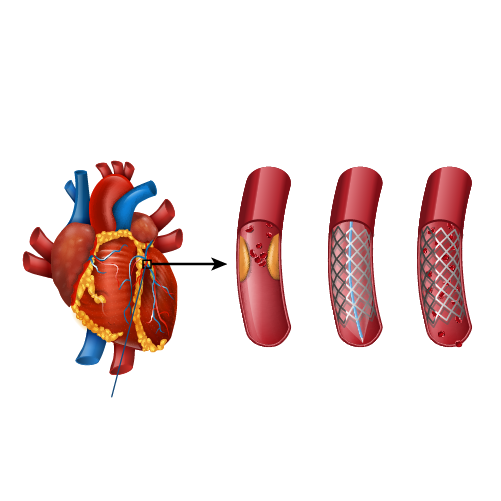
Angioplasty
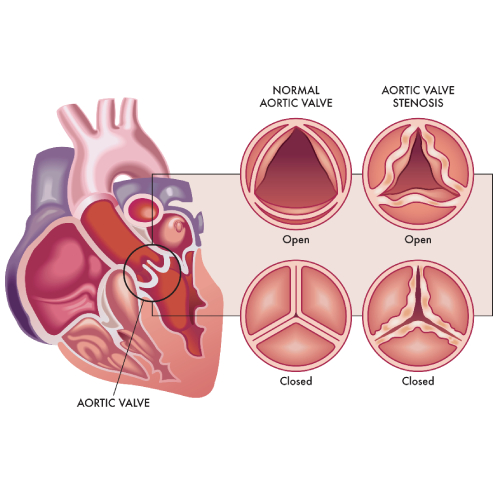
Aortic Stenosis
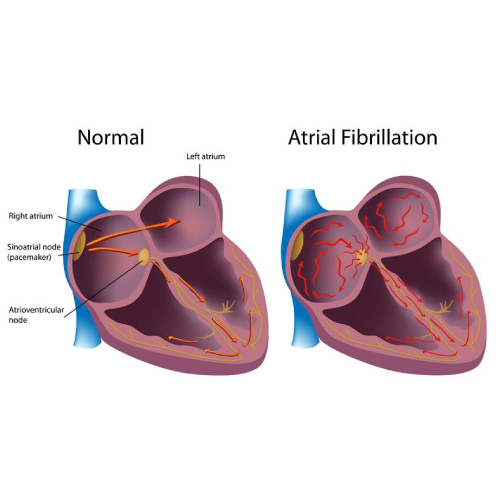
Atrial Fibrillation
